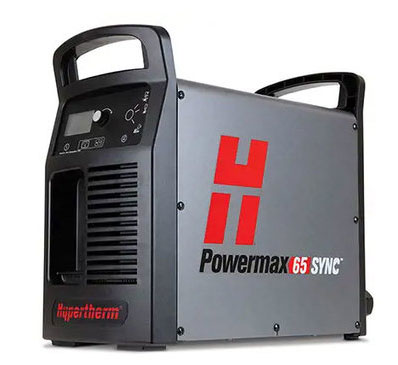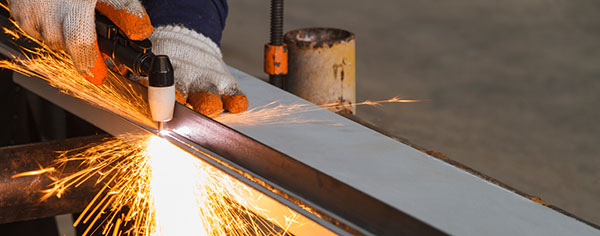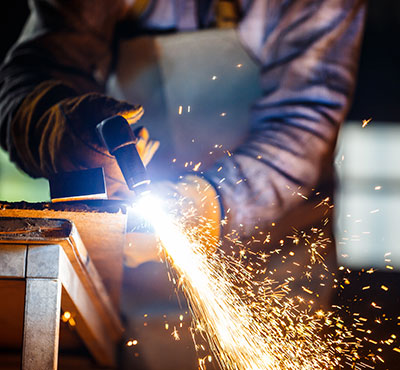A Record of Metal & Flame Welding Blog
More Guides
-
How Can Robotic Welding Transform Fabrication Processes?
Oct 28, 2025, 09:26 AM by Ann McCallum-BolesRobotic welding is reshaping modern fabrication by delivering faster production, lower costs, and higher-quality results. This blog explores how welding automation can streamline your workflow, reduce waste, and elevate product consistency. Whether you're considering a switch or scaling up, discover why robotic welding is a smart investment for competitive manufacturing.Full story -
How Welding Positioners Can Help Improve Productivity, Quality, and Workplace Safety
Aug 14, 2025, 10:53 AM by Ann McCallum-BolesWelding positioners are crucial tools for modern fabrication, improving productivity, quality, and safety. By securely holding and rotating workpieces, they enable welders to create cleaner, more uniform welds, reducing inconsistencies and material waste. These tools also enhance worker safety by minimizing heavy lifting and improving ergonomics. Ultimately, positioners streamline workflows, reduce downtime, and are a key investment for any shop aiming to boost efficiency and consistency.Full story -
What Is Flux Core Welding Wire?
Aug 4, 2025, 11:32 AM by Ann McCallum-BolesFlux-cored welding wires, filled with flux, offer versatility and high deposition rates, making them ideal for industries like shipbuilding, construction, and outdoor repairs. Available in gas-shielded and self-shielded types, they provide strong, reliable welds and are beginner-friendly. Benefits include portability, strength, and adaptability across materials, though slag removal is required. WeldingSupply.com offers an extensive selection and expert guidance to help you choose the right wire for your project and achieve optimal results.Full story -
How to Choose a Plasma Cutter
Jun 17, 2025, 16:56 PM by Ann McCallum-BolesChoosing the right plasma cutter ensures precise, efficient metal fabrication. Key factors include material thickness, which affects amperage needs, input power (115V, 230V, or dual voltage for flexibility), and duty cycle, which determines how long the machine can run before cooling. Portability matters if you work in different locations, while operating costs like consumables impact overall expense. Plasma cutters offer speed, accuracy, and versatility. Find expert tools at WeldingSupply.com!Full story -
The History of Welding
Mar 18, 2025, 16:58 PM by Ann McCallum-BolesWelding is key in today's world. It helps build everything from skyscrapers and ships to airplanes and new medical technology. Welding has greatly influenced humanity and its impact reaches far into the past and over centuries. It highlights our endless quest for innovation and progress. By looking at welding's origins, key milestones, and modern advancements, we see how this craft has influenced society for thousands of years.Full story -
The Benefits of Automated Welding: Revolutionizing Fabrication Processes
Mar 3, 2025, 14:08 PM by Ann McCallum-BolesAutomated welding utilizes machines and computer programs to help make welding faster and more consistent. These systems follow set instructions to complete welding tasks with less help from people, which may reduce errors and improve efficiency. By keeping weld quality more uniform, automated welding can support better results across large projects. While outcomes can vary, many manufacturers use automation to meet production goals and stay competitive.Full story -
Welding Accessories for Beginner Welding
Feb 13, 2025, 09:54 AM by Ann McCallum-BolesThis guide serves as a starting point for beginner welders, detailing the essential tools and accessories required to ensure safety, precision, and efficiency during the welding process. We'll walk you through the key facets of welding—from material preparation and workspace setup to selecting the proper equipment and consumables for different welding methods such as MIG, TIG, and stick welding. We'll also discuss the importance of post-weld cleanup to achieve durable, high-quality results.Full story
How to Choose a Plasma Cutter

It should be noted that this guide is not a replacement for in-person instruction—you should always seek instruction from a qualified trainer. However, here are five key things to think about when choosing the plasma cutter that best suits your needs.
Table of Contents:
→ Plasma Cutter Material Thickness and Amperage
→ Plasma Cutter Input Power
→ Plasma Cutter Duty Cycle
→ Plasma Cutter Portability
→ Plasma Cutter Operating Costs
→ Why Plasma Cutting Is a Smart Investment
→ Frequently Asked Questions About Plasma Cutters
Plasma Cutter Material Thickness and Amperage
The first thing you need to know is the type and thickness of the material you’ll cut most often. Plasma cutters can handle conductive metals like steel, stainless steel, aluminum, and copper. However, the thickness of the material has a direct impact on choosing the right plasma cutter, since different projects require different amperages. Amperage is crucial when it comes to cutting thicker materials. For example, lighter projects on thinner materials will require less amperage, while heavier fabrication work on thicker metal will demand a plasma cutter with higher amperage.
If your plasma cutter doesn’t have enough power, it may struggle to cut through the material, slow you down, and make your projects more difficult, not to mention the subpar cut quality. Be sure to choose a machine that properly matches the material and thickness requirements of your most common tasks.
Plasma Cutter Input Power
Another important factor to consider is the required input power of the machine. Plasma cutters are typically available with different voltage requirements: 115V, 115V/230V dual voltage, or 230V and higher input power.
available with different voltage requirements: 115V, 115V/230V dual voltage, or 230V and higher input power. 115V Plasma Cutters:
These are often suitable for beginners or those working out of standard home outlets. They’re great for hobbyists or light-duty work but may lack the power needed for large-scale or professional projects.
Dual Voltage Plasma Cutters:
These are ideal for users who frequently move their machine between different locations and need flexibility with power sources. Dual voltage plasma cutters can adapt to both 115V and 230V outlets, making them a versatile option.
230V (or higher) Plasma Cutters
If you’re looking for more cutting power for heavier jobs, a larger system will require 230V input power or higher. These machines are suitable for professional environments cutting thick materials with high-throughput requirements. Think about where you’ll be using your plasma cutter and decide what your priorities are: portability, flexibility, or high output.
Plasma Cutter Duty Cycle
The duty cycle is a measurement of how long a plasma cutter can operate continuously before it needs to cool down. It’s typically expressed as the amount of time the machine can be operated within a 10-minute period. For example, if a plasma cutter has a 40% duty cycle, it can operate for four minutes out of every 10 and then needs a six-minute cooldown.Long Duty Cycles:
Plasma cutters with higher duty cycles are best for heavy-duty fabrication and high-speed production environments where consistent use is required.
Short Duty Cycles:
If you only need a cutter for occasional use or smaller jobs, a shorter duty cycle may be sufficient. Choosing a plasma cutter with the appropriate duty cycle is important to avoid interruptions in your workflow. If your operation is focused on large-scale production, you’ll want a machine with a high-duty cycle that can keep up with your pace.
Plasma Cutter Portability

Ask yourself whether portability is important to your work. If you’re planning to keep the cutter in one place, a larger machine could be a better option since it often comes with more features and cutting capability. However, if your projects require mobility, look for lighter, portable models that are easier to carry.
Plasma Cutter Operating Costs
Beyond the upfront cost of purchasing a plasma cutter, think about its long-term operating costs. Plasma cutters use consumables such as shields, nozzles, and electrodes to perform their cuts, which wear down over time and need to be replaced. The consumption rate of these components varies from one cutter to another. Some machines and brands are more efficient than others with consumables lasting longer between replacements. Additionally, while cheaper consumables may seem like a good deal, investing in OEM consumables may help you save money over time by reducing how often parts need to be replaced.
Research both the plasma cutter itself and the consumables it uses. This will help you calculate the total cost of ownership and help you find a machine that balances performance and affordability.
Why Plasma Cutting Is a Smart Investment
When it comes time to choose a plasma cutter, keep these factors in mind: material thickness, input power requirements, duty cycle, portability, and operating costs. By clarifying your specific needs, you’ll be able to find a machine that fits your projects and helps you work more effectively.
Need Help Selecting a Plasma Cutter?
Finding the right plasma cutter might seem overwhelming, but WeldingSupply.com is here to help make the process easier. We offer a wide range of plasma cutters, tools, and consumables to meet your needs—whether you’re a hobbyist, contractor, or professional fabricator.Our experienced team can help answer your questions and guide you toward the best options for your setup. From lightweight portable units to industrial-grade machines, we have solutions for every application.
Browse our plasma cutting products online or contact us for advice on making the right purchase. WeldingSupply.com is dedicated to helping you work faster, smarter, and more efficiently with tools that get the job done right. Reach out today to learn more!
Shop Plasma Cutting →
Frequently Asked Questions About Plasma Cutters
What is a plasma cutter?
A plasma cutter is a tool used to cut through electrically conductive metals by using a high-velocity jet of superheated, ionized gas (plasma). This process allows for fast, clean, and precise cuts on a variety of metals.
What types of metal can a plasma cutter cut?
Plasma cutters can cut any metal that is electrically conductive, including steel, stainless steel, aluminum, copper, and brass. The thickness of the metal that can be cut depends on the amperage of the plasma cutter.
What is duty cycle, and why is it important?
The duty cycle is a rating that indicates how long a plasma cutter can run continuously before it needs to cool down. It's expressed as a percentage of a 10-minute period. A higher duty cycle (e.g., 60%) means the machine can operate for six out of ten minutes. Higher duty cycles help enable heavy-duty or high-production work.


